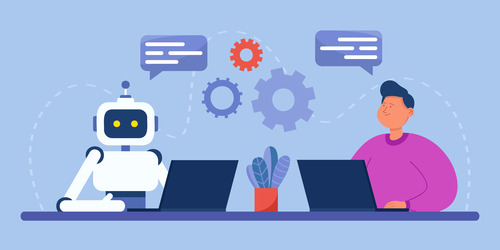Incorporating trends for customer engagement and enhanced experience is essential for businesses' growth. However, blindly investing without evaluating the return on investment is a path fraught with uncertainties. This discussion is to highlight the most popular trend of AI chatbot service. Businesses are increasingly turning to AI chatbots to enhance customer interactions and streamline processes. Yet, the journey doesn't end at implementation; it begins at understanding the impact of these chatbots through effective metrics is the key to success in the digital era. Here are the top key metrics to evaluate the effectiveness of AI chatbot service.
-
First-Contact Resolution Rate
Imagine you have a question or need assistance, and you reach out to an AI chatbot service. You ask your question, and voila! The chatbot provides an immediate and accurate answer. This is the hallmark of a high first-contact resolution rate. It measures the chatbot's ability to address and resolve customer inquiries in a single interaction. A high FCR rate signifies efficiency and effectiveness. Customers appreciate quick solutions, and businesses save valuable time and resources.
-
Response Time: Navigating the Speed of Support:
In the digital age, time is of the essence. The speed at which a chatbot responds to customer queries is a crucial metric. Response time, often measured in seconds, indicates the chatbot's efficiency and can significantly impact the customer experience. Fast response times lead to increased customer satisfaction and engagement. No one enjoys waiting, especially in the fast-paced digital world.
-
Accuracy and Correct Responses
Often, customers ask a chatbot about product specifications, and the chatbot responds with accurate, detailed information. Accuracy in responses is vital. The accuracy and correct responses metric reflect the percentage of precise information the chatbot provides. High accuracy rates show that the chatbot is well-trained and capable of understanding and addressing inquiries correctly. Accuracy contributes to a smoother customer experience.
-
Customer Satisfaction (CSAT) Score
In the customer service universe, the Customer Satisfaction (CSAT) score serves as the ultimate north star. After interacting with an AI chatbot service, customers are often asked to rate their satisfaction on a scale. High CSAT scores indicate that the chatbot is delivering a positive experience. On the other hand, low scores signal areas for improvement. This metric directly reflects how satisfied customers are with the support provided by the chatbot.
-
Resolution Rate:
A chatbot's primary mission is to guide customers to solutions. The resolution rate metric measures the chatbot's ability to assist customers in resolving, even if it doesn't directly solve the issue. It considers cases where the chatbot provides the necessary information or steps for the customer to achieve resolution. A high-resolution rate signifies that the chatbot is effective in helping customers with their concerns.
-
Abandonment Rate
Sometimes, customers initiate interactions with chatbots but abandon the conversation before completion. The abandonment rate measures the percentage of interactions that customers exit prematurely. A high abandonment rate may indicate that the chatbot fails to engage customers effectively or provides unsatisfactory responses. Understanding abandonment rates is vital in ensuring customers stay engaged throughout their interactions with chatbots.
-
Escalation Rate:
The escalation rate is a key metric that tracks how often a chatbot needs to escalate a customer's inquiry to a human agent. A low escalation rate indicates that the chatbot can efficiently handle a wide range of issues. On the other hand, a high escalation rate may suggest that the chatbot struggles with complex or nuanced queries.
-
Task Completion Rate:
In the digital era, customers interact with the AI chatbot service to accomplish specific tasks. The task completion rate measures the chatbot's ability to help customers complete these tasks successfully. Whether it's making a reservation, placing an order, or troubleshooting a technical issue, a high task completion rate demonstrates the chatbot's utility and effectiveness.
- User Engagement: Engagement metrics, such as the number of interactions per user, the average session duration, and the frequency of return visits, indicate how well customers bond with the chatbot. High user engagement signifies that customers find value in the chatbot and are using it as a preferred channel for assistance.
Conclusion
In conclusion, the performance of the AI chatbot service is a multifaceted puzzle with several crucial pieces. These key metrics serve as essential guides, helping businesses assess the effectiveness of their chatbots in meeting customer needs and organizational goals. By continually monitoring and improving these metrics, companies can ensure that their chatbots provide efficient, accurate, and satisfying support experiences, ultimately contributing to customer loyalty and business success.







